Quad exercises are the unsung heroes of leg day. They’re the backbone of lower body strength, the secret sauce to explosive power, and the key to filling out those jeans. But not all quad exercises are created equal. Some are the Michael Jordan of leg day, while others are more like the guy who rode the bench in high school.
In this article, we’re going to break down the best quadriceps exercises, ranking them from A to F tier. We’ll dive into the nitty-gritty of what makes a great quadriceps exercise, balancing factors like volume-load, proximity to failure, form breakdown, motor-unit recruitment, safety, and individual limitations. It’s not just about lifting heavy; it’s about lifting smart.
Now, before you get your lifting straps in a twist, remember that these rankings are based on a mix of scientific research and good old-fashioned experience. Exercise is as much an art as it is a science. What works like a charm for one person might feel like a medieval torture device for another. So, take these rankings with a grain of salt (or pre-workout, if that’s more your style).
We’ll explore why exercise variation is crucial for long-term gains, how different movements target your quadriceps in unique ways, and why training to failure isn’t always the golden ticket to Quadsville. We’ll even throw in some nerdy science about motor unit recruitment because, let’s face it, nothing impresses gym bros more than dropping terms like “size principle” between sets.
So, strap in, chalk up, and let’s dive into the world of quad exercises. By the end of this article, you’ll be equipped to build legs that would make even the mightiest oak tree jealous.
Key Takeaways
- Exercise variation is key: Don’t get stuck in a squat rut. Mix it up to keep your quads guessing and growing.
- Proximity to failure matters: Training to failure can boost muscle growth, but it’s not always necessary or smart.
- The size principle is your friend: Understanding motor unit recruitment can help you choose exercises that maximize quad engagement.
- Form is king: Even the best exercises can become the worst if performed incorrectly.
- Individual differences matter: What works for the Instagram fitness model might not work for you, and that’s okay.
- Balance is crucial: A well-rounded quad workout incorporates exercises from different tiers for optimal growth and strength.
Introduction
Quad development isn’t just about picking the “best” exercise and hammering it to death. It’s a nuanced process that requires a strategic approach. First and foremost, exercise variation is crucial for long-term muscle growth. Your quads won’t reach their full potential by sticking to one movement pattern. Mix it up to challenge your muscles from different angles.
Secondly, proximity to failure plays a significant role in muscle hypertrophy. Pushing your sets close to muscular failure stimulates growth through metabolic stress and mechanical tension. However, this doesn’t mean you should train to failure on every set. Balance is key.
Lastly, understanding the size principle of motor unit recruitment is vital. Different exercises recruit motor units in varying ways. Some movements, like leg extensions, allow for easier isolation of the quadriceps, while compound exercises like squats engage multiple muscle groups simultaneously. This principle explains why a well-rounded quad routine should include both isolation and compound movements, like dumbbell compound movements.
Remember, quad training is both an art and a science. While research provides valuable insights, personal experimentation and consistency are equally important. Your journey to impressive quadriceps starts here, so let’s dive into the nitty-gritty of quad exercises and their effectiveness.

The Art and Science of Quad Growth
Building impressive quads isn’t just about lifting heavy weights. It’s a delicate balance of several factors that can make or break your gains. Think of it as a recipe – you need the right ingredients in the right proportions.
First up, we’ve got volume-load. This is simply the amount of work you’re doing. More isn’t always better, but too little won’t cut it either. It’s like cooking pasta – you need enough water, but flooding the pot won’t make it cook faster.
Next, we’ve got proximity to failure. This is how close you’re getting to the point where you can’t do another rep. It’s crucial for muscle growth, but push it too far too often, and you’re asking for trouble. It’s like seasoning your food – a pinch of salt enhances the flavor, but too much ruins the dish.
Form breakdown is another key player. As you fatigue, your form might slip. A little deviation is fine, but too much, and you’re not only reducing the effectiveness of the exercise but also risking injury. It’s like trying to run a marathon in flip-flops – you might make it, but it’s not ideal and you’re likely to hurt yourself.
Motor-unit recruitment is the process of engaging more muscle fibers as the load increases. Different exercises recruit motor units differently, which is why variety is the spice of life… and quad growth.
Safety is non-negotiable. No exercise is worth an injury that sets you back weeks or months. It’s like driving a car – you want to go fast, but not at the expense of crashing.
Lastly, we’ve got individual limitations. We’re all built differently, and what works for one person might not work for another. It’s like trying to fit into someone else’s shoes – sometimes it just doesn’t work, no matter how much you want it to.
Now, here’s the kicker – a lot of these recommendations are based on experience, not just scientific research. Exercise is as much an art as it is a science. It’s like cooking – sure, you can follow a recipe to the letter, but the best chefs know when to trust their instincts and make adjustments on the fly.
Remember, building impressive quads is a marathon, not a sprint. It takes time, patience, and a willingness to experiment. So, don’t be afraid to try different exercises and see what works best for you. After all, the best exercise is the one you’ll actually do consistently. Now, let’s dive into the essentials of quad exercises and see which ones reign supreme.

Understanding Motor Unit Recruitment
Let’s dive into the essentials of motor unit recruitment. It’s not just about lifting heavy stuff and hoping for the best. There’s a method to the madness, and it’s called the size principle. This principle is the backbone of effective quad training.
The size principle states that motor units are recruited in order of size, from smallest to largest. What does this mean for your quads? Well, when you start an exercise, your body first recruit the smaller, fatigue-resistant motor units. As the demand increases, larger motor units join the party. These big boys are responsible for the most significant force production and muscle growth.
Now, here’s where it gets interesting. Different quad exercises recruit motor units in unique ways. Take the leg extension, for example. It’s a single-joint movement that isolates the quads, allowing for high levels of activation even at lower loads. On the flip side, compound movements like squats require more total muscle activation, potentially recruiting a wider range of motor units across multiple muscle groups.
But don’t think you can just stick to one exercise and call it a day. Your quads are smart cookies. They adapt to specific movement patterns over time. This is why variation is crucial. By incorporating different exercises, you’re challenging your quads in new ways, forcing them to recruit motor units they might have been slacking on. For those looking to enhance their quad workouts, consider exploring complete guide to effective total body workouts which can provide insights into full-body exercises that engage the quads.
Here’s a fun fact: research has shown that training to failure can lead to greater motor unit recruitment. A study by Goto et al. found that continuous exercise without rest periods led to higher growth hormone responses and greater muscle adaptations. This suggests that pushing your quads to their limits can kickstart some serious growth.
But before you go all-out on every set, remember this: not all exercises are created equal when it comes to safely reaching failure. Leg extensions? Sure, go nuts. But maxing out on heavy squats every session? That’s a one-way ticket to Snap City, population: you.
The key is to understand how different exercises allow you to safely approach failure. Machines like the leg press offer a controlled environment where you can push your limits with less risk. Free-weight exercises, while valuable, require more caution as form breakdown can lead to injury.
So, what’s the takeaway? Mix it up. Use a variety of exercises to keep your quads guessing and growing. And when it’s safe to do so, don’t be afraid to push close to failure. Your quads will thank you – after they stop cursing your name, of course.
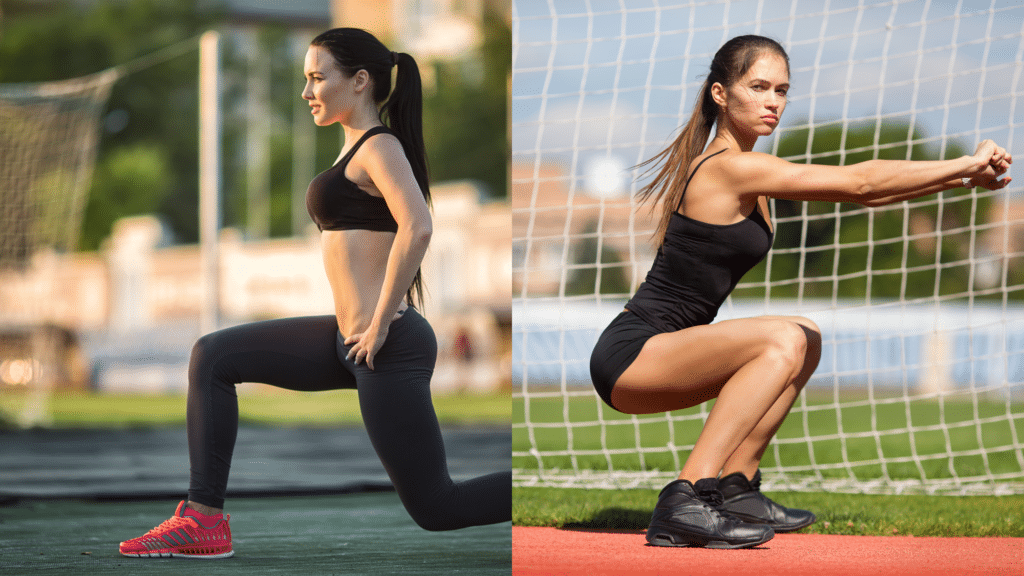
The Importance of Exercise Variation
Exercise variation is crucial for long-term muscle growth. It’s not just about keeping your workouts interesting; it’s about maximizing your gains. Different exercises target the quads in unique ways, stimulating various muscle fibers and promoting overall development.
Think of your quads as a complex machine with multiple parts. Each exercise is like a specialized tool, addressing specific areas and functions. By incorporating a variety of movements, you ensure comprehensive muscle engagement and growth.
Variation also helps prevent plateaus. Your body is remarkably adaptable. Stick to the same routine for too long, and your progress will stall. By regularly introducing new stimuli, you keep your muscles guessing and growing.
Moreover, different exercises place varying degrees of stress on joints and connective tissues. Rotating through a range of movements helps distribute this stress, potentially reducing the risk of overuse injuries.
Consider the leg press versus the Bulgarian split squat. The leg press allows for heavy loads and targets the quads directly. But the Bulgarian split squat challenges your balance and engages stabilizing muscles. Both have their place in a well-rounded program.
Don’t forget about angle variations. A slight change in foot placement or bench angle can shift the emphasis within the quad muscles. This nuanced approach ensures no part of your quads gets left behind.
Remember, muscle growth isn’t just about lifting heavy. It’s about smart, varied stimulation. Mix it up, challenge yourself, and watch your quads transform. Just don’t go overboard – consistency within variation is key. Your quads will thank you for the diverse workout menu.

Proximity to Failure and Metabolic Stress
Let’s talk about pushing your quads to their limits. Training to failure isn’t just about showing off in the gym. It’s a powerful tool for muscle growth, especially for your quads. But before you start grinding out reps until you collapse, let’s break it down.
Proximity to failure is all about how close you get to the point where you can’t perform another rep with good form. The closer you get, the more muscle fibers you recruit. This is where the magic happens for quad growth.
Now, let’s geek out for a second. A study by Goto and colleagues looked at the impact of metabolic stress on muscle growth. They compared two groups: one that exercised continuously and another that took short rests. Guess what? The continuous group, which experienced more metabolic stress, saw greater increases in muscle size and strength.
This is where quad training gets interesting. Different exercises allow you to push closer to failure safely. Take leg extensions, for example. You can grind out those last few reps without worrying about dropping a barbell on your head. On the flip side, exercises like squats require more caution as you approach failure.
However, you don’t always need to train to absolute failure to reap the benefits. Getting close, say within 1-3 reps of failure, can still produce significant gains without the added risk and recovery demands of going all-out every time, specifically when training your quadriceps.
The key is to find the sweet spot for each exercise. Leg presses? You can push pretty hard. Bulgarian split squats? Maybe ease off a bit to maintain balance and form. It’s about knowing when to push and when to pull back.
Remember, metabolic stress isn’t just about burning muscles and gasping for air. It’s a powerful stimulus for growth. By manipulating rest periods, tempo, and exercise selection, you can create the optimal environment for quad gains.
So, next time you’re hitting quads, think about how close you’re pushing to failure. Are you leaving gains on the table, or are you pushing too hard and risking injury? Find that sweet spot, and watch your quads grow.
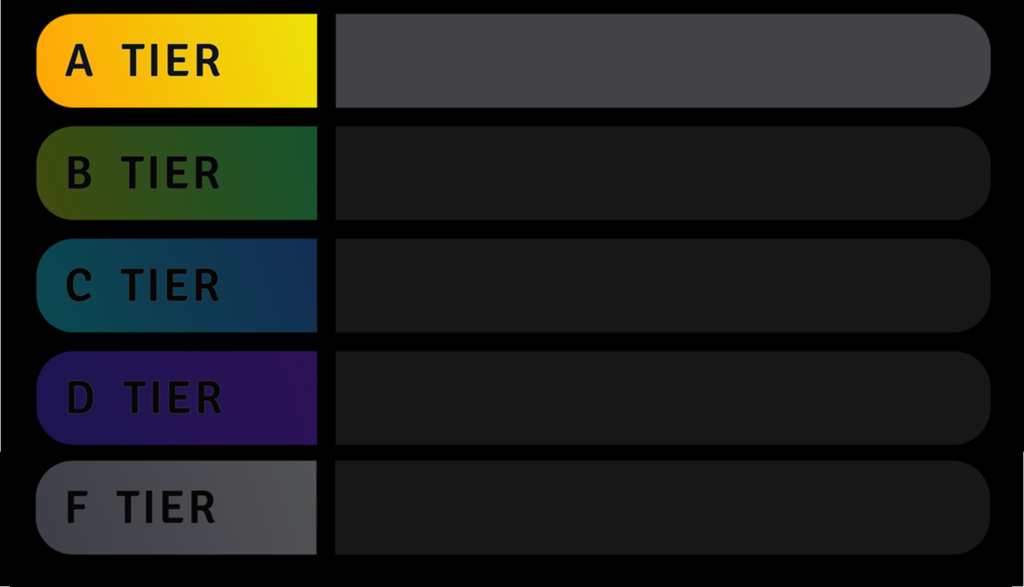
A-Tier Exercises: The Cream of the Crop
Let’s dive into the heavy hitters of quad development. These exercises are the real deal, offering maximum bang for your buck when it comes to building those tree trunk legs.
Leg Press and Variations
The leg press is a quad-building powerhouse. It allows you to move serious weight while minimizing lower back strain. The beauty of this beast lies in its versatility. You can adjust foot placement to target different areas of the quads or even emphasize other leg muscles.
For maximum quad engagement, place your feet lower on the platform and keep them shoulder-width apart. This position increases the knee flexion angle, ramping up quad activation. Just remember, ego has no place here. Control the weight throughout the entire range of motion.
Variations like single-leg presses or narrow stance presses can add spice to your routine. They’re particularly useful for addressing muscle imbalances or targeting specific areas of the quads.
The leg press earns its A-tier status by allowing you to push close to failure safely. This is crucial for maximizing metabolic stress, a key factor in muscle growth. Remember that study by Goto et al.? It showed that continuous tension without rest periods led to greater hormonal responses and muscle adaptations. The leg press lets you achieve this without risking a face-plant on the gym floor.
Leg Extensions
Now, I know what you’re thinking. “A single-joint exercise in the A-tier? Has the good doctor lost his marbles?” Hear me out. Leg extensions are the unsung heroes of quad development.
This exercise isolates the quadriceps like no other. It’s the perfect finisher after compound movements or a great way to pre-exhaust the quads before squats or leg presses. The key is in the execution. Focus on squeezing your quads at the top of each rep and controlling the eccentric (lowering) phase.
Leg extensions allow for an incredible mind-muscle connection. You can really feel those quads working, which can enhance overall muscle activation in your training. Plus, they’re relatively low-risk, allowing you to push close to failure without fear of crushing yourself under a barbell.
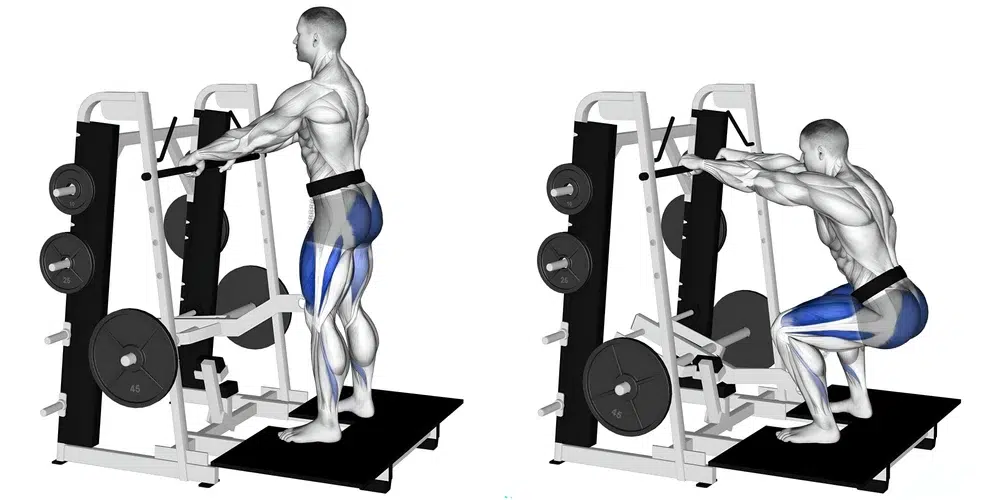
Belt Squats
If you haven’t tried belt squats, you’re missing out on a quad-building goldmine. This exercise takes the load off your spine while still allowing for heavy lower body work. It’s like the best of both worlds – the benefits of a squat without the back strain.
The belt squat’s unique loading position forces you to maintain an upright posture, which can lead to greater quad activation compared to traditional squats. It’s also a godsend for those with back issues or anyone looking to give their spine a break while still hammering their legs.
Proper form is crucial here. Keep your chest up, core tight, and focus on driving through your heels. Experiment with foot placement to find what works best for your biomechanics.
Pendulum Squat
Last but certainly not least in our A-tier lineup is the pendulum squat. This machine is a quad-building marvel that combines the best aspects of free weight squats and machine exercises.
The pendulum squat’s unique design allows for a deep range of motion while maintaining a more upright torso position than traditional squats. This shifts more emphasis to the quads and reduces lower back strain. The fixed path of the machine also allows you to focus solely on pushing with your legs, rather than worrying about balance or form breakdown.
One of the key benefits of the pendulum squat is its ability to create constant tension on the quads throughout the entire range of motion. This aligns perfectly with our earlier discussion on metabolic stress and its importance in muscle growth.
To maximize its effectiveness, focus on controlling the eccentric phase and pushing explosively on the concentric. Don’t be afraid to go deep – the pendulum squat allows for a greater range of motion than many other quad exercises.
| Exercise | Key Benefits | Form Tips |
|---|---|---|
| Leg Press | High load capacity, minimal back strain | Feet shoulder-width, lower on platform for quad focus |
| Leg Extensions | Quad isolation, mind-muscle connection | Squeeze at top, control lowering phase |
| Belt Squats | Spine-friendly, upright posture | Chest up, drive through heels |
| Pendulum Squat | Deep range of motion, constant tension | Control descent, push explosively up |
These A-tier exercises earn their spot through their ability to create significant metabolic stress, allow for heavy loading, and provide a safe environment to push close to failure. Remember, the key to quad growth isn’t just about lifting heavy – it’s about creating the right stimulus for muscle adaptation. These exercises, when performed correctly and with appropriate intensity, do just that.
Now, don’t think you need to do all of these in every leg workout. Variety is the spice of life, and more importantly, it’s crucial for continued muscle growth. Mix and match these A-tier movements with exercises from other tiers to keep your quads guessing and growing. After all, building impressive quads is a marathon, not a sprint. So lace up those lifting shoes and get ready to turn some heads with your quad development. For those looking to dive deeper into optimizing their training for muscle growth, the ultimate guide to building muscle explores essential tactics for balancing workout intensity and rest periods.
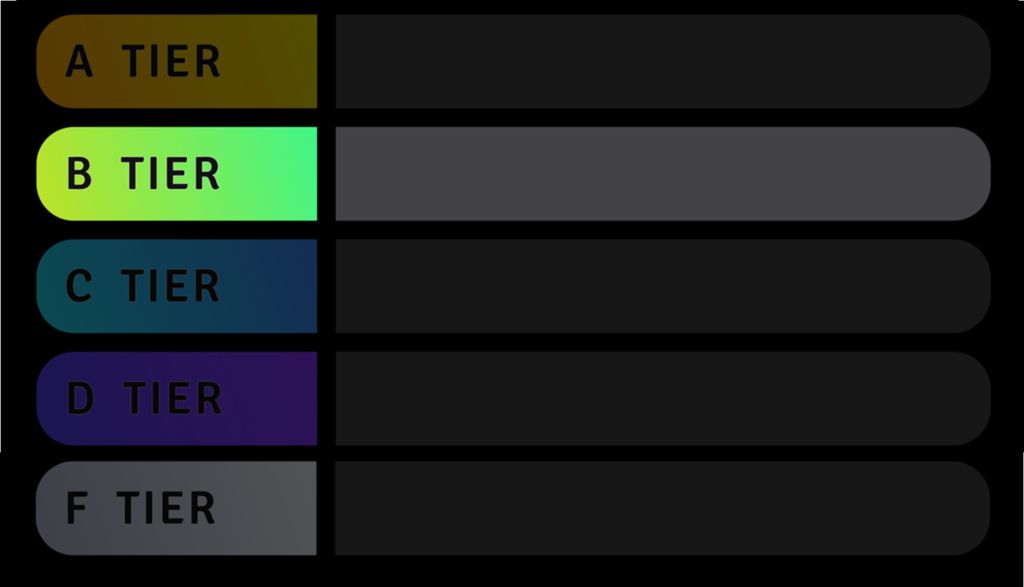
B-Tier Exercises: Great but with Limitations
Alright, let’s dive into the B-tier quad exercises. These moves are solid performers but come with a few strings attached. They’re like that friend who’s always down for a good time but might flake at the last minute. Let’s break it down.

Hack Squats
Hack squats are a beast of an exercise, targeting your quads with laser-like precision. The fixed movement pattern allows for heavy loading, which is great for muscle growth. However, it’s not all sunshine and rainbows.
Benefits:
- Isolates the quads effectively
- Allows for heavy loading
- Reduces lower back stress compared to free-weight squats
Limitations:
- Can be tough on the knees for some folks
- Limited carry-over to functional movements
- Machine availability can be an issue in some gyms
Proper form is crucial here. Keep your back flat against the pad, feet shoulder-width apart, and descend until your thighs are parallel to the platform. Don’t let your knees cave in as you push back up. If you’re feeling frisky, try pausing at the bottom for extra quad burn.
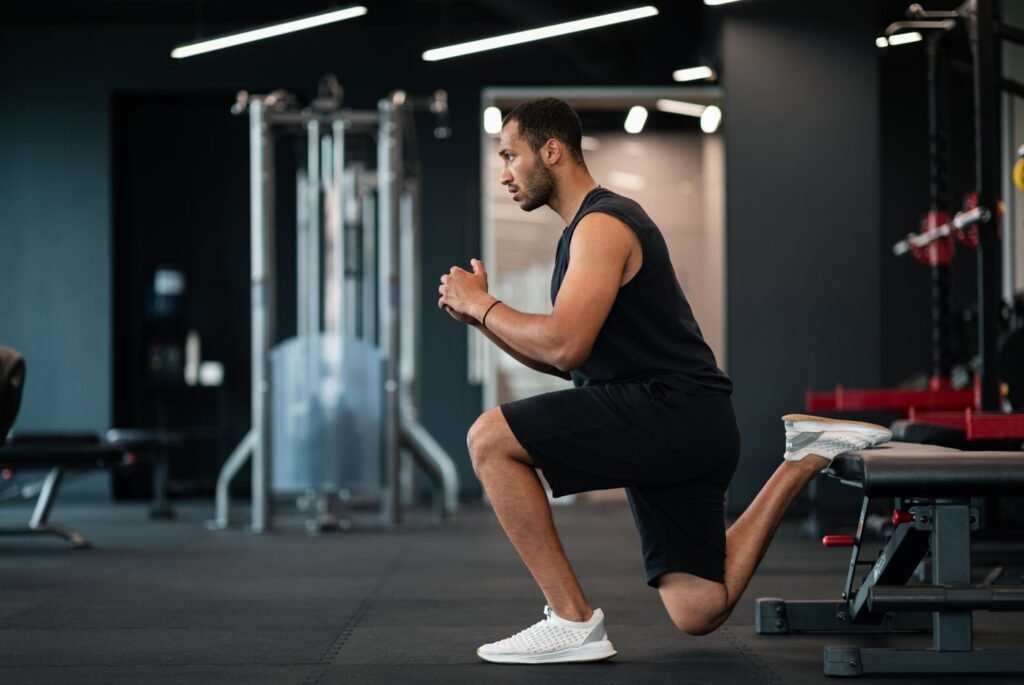
Bulgarian Split Squats
Ah, the exercise everyone loves to hate. Bulgarian split squats are like the vegetables of the workout world – you know they’re good for you, but that doesn’t make them any more enjoyable.
Benefits:
- Excellent for addressing muscle imbalances
- Improves balance and stability
- Targets quads, glutes, and hamstrings
Challenges:
- Requires good balance and coordination
- Can be uncomfortable for the back leg
- Difficult to load heavily
To nail these, place your back foot on a bench, hop your front foot forward, and lower yourself until your back knee nearly touches the ground. Keep your torso upright and front knee tracking over your toes. And for the love of gains, don’t forget to switch legs.
Split Squats (Flat Foot or Elevated Front Foot)
Split squats are the less dramatic cousin of Bulgarian split squats. They’re still challenging but won’t make you question your life choices quite as much.
Benefits:
- Great for unilateral leg development
- Improves balance and stability
- Easier to master than Bulgarian split squats
Limitations:
- Can be challenging to load heavily
- May not provide as much quad activation as some other exercises
For flat foot split squats, take a long stride forward and lower your back knee towards the ground. Keep your front shin vertical and torso upright. Want to spice things up? Elevate your front foot on a small platform to increase the range of motion and quad engagement.
| Exercise | Quad Activation | Balance Required | Loading Potential | Knee Stress |
|---|---|---|---|---|
| Hack Squats | High | Low | High | Moderate to High |
| Bulgarian Split Squats | Moderate to High | High | Moderate | Low to Moderate |
| Split Squats | Moderate | Moderate | Moderate | Low |
Now, here’s the kicker – these B-tier exercises are like the supporting actors in a blockbuster movie. They might not get top billing, but they’re crucial for a well-rounded performance. Mix them into your routine to keep your quads guessing and growing.
Remember, just because an exercise is B-tier doesn’t mean it’s not worth your time. It’s all about finding what works for your body and goals. And hey, if you can make friends with Bulgarian split squats, you can probably make friends with anyone. Now get out there and make those quads quake!

C-Tier Exercises: Effective but Challenging
Front Squats
Front squats are a powerful quad-builder, but they come with their fair share of challenges. Let’s dive into why they’re sitting pretty in the C-tier.
First off, front squats are a quad-dominant exercise that’ll light your legs on fire. They target the vastus medialis oblique (VMO) more effectively than back squats, giving you that coveted teardrop muscle above the knee. The upright torso position in front squats also reduces stress on the lower back, making them a solid choice for those with back issues. Learn more about the differences and benefits in this detailed comparison: Comparing Split Squats and Back Squats for Hypertrophy.
But here’s the kicker: front squats are technically demanding. The bar placement across the front deltoids and clavicles can be uncomfortable for beginners. It’s like balancing a barbell on a shelf made of your shoulders – not exactly a walk in the park. This discomfort often limits the amount of weight you can use, potentially reducing overall quad stimulation.
Proper form is crucial. Keep your elbows high, core tight, and chest up. If your elbows drop, you’re in for a world of hurt – and not the good kind. Many lifters struggle with wrist mobility, leading to compromised form and reduced effectiveness.
Another challenge? The front squat demands excellent ankle mobility. Without it, you’ll struggle to maintain an upright torso, potentially shifting stress away from the quads and onto other muscle groups. It’s like trying to do ballet in work boots – possible, but not ideal.
Here’s a pro tip: if you’re struggling with the barbell, try the cross-arm grip or use lifting straps looped around the bar. These variations can make the exercise more accessible while you work on your mobility and technique.
Despite these challenges, front squats offer unique benefits. They’re excellent for developing core strength and improving posture. Plus, they’re a staple in Olympic weightlifting, making them valuable for athletes in various sports.
In terms of proximity to failure, front squats can be tricky. The technical nature of the lift means form breakdown often occurs before true muscular failure. This can limit the metabolic stress on the quadriceps, potentially reducing muscle hypertrophy benefits.
| Pros | Cons |
|---|---|
| Quad-dominant exercise | Technically demanding |
| Targets VMO effectively | Can be uncomfortable |
| Reduced lower back stress | Requires good mobility |
| Improves core strength | Form breakdown limits failure |
| Valuable for athletes | May limit weight used |
In conclusion, front squats are a solid C-tier exercise. They’re effective for quad development but come with a steep learning curve. Master the technique, and you’ll have a powerful tool in your quad-building arsenal. Just remember, sometimes the most challenging exercises yield the most rewarding results – if you can stick with them long enough to reap the benefits.

Back Squats
Back squats are a classic exercise that’s been a staple in strength training for decades. They’re effective for quad development, but they come with some challenges that land them in the C-tier.
Let’s start with the good stuff. Back squats are a compound movement that engages multiple muscle groups, including the quads, glutes, and hamstrings. They’re great for overall lower body strength and can help improve your athletic performance. Plus, they’re versatile – you can adjust your stance width and bar position to target different areas of your legs.
But here’s the catch: back squats can be tough on your lower back and knees if not performed correctly. Many lifters struggle to maintain proper form, especially as they fatigue or lift heavier weights. This can lead to reduced quad activation and increased risk of injury.
Another drawback is the learning curve. Proper back squat technique takes time to master. You need to nail the right bar position, maintain a neutral spine, and achieve proper depth. It’s not as straightforward as hopping on a leg press machine. Focus on your hip, knee, and toe alignment in the squatting position.
Now, let’s talk about variations. You’ve got your standard back squat, but you can also try low-bar squats, which shift more emphasis to the posterior chain. High-bar squats, on the other hand, keep the focus more on the quads. Box squats can be useful for improving depth and explosiveness.
Here’s a quick table comparing different squat variations:
| Variation | Primary Focus | Difficulty Level |
|---|---|---|
| High-Bar | Quads | Moderate |
| Low-Bar | Posterior Chain | High |
| Box Squat | Explosiveness | Moderate |
When it comes to motor unit recruitment, back squats can be effective, especially when performed with heavy loads. However, many lifters struggle to reach true muscular failure safely with this exercise. This is where the Goto et al. study comes into play-remember, continuous tension without rest periods can lead to greater metabolic stress and potentially better muscle growth. The quadriceps are heavily engaged in the squatting position
So, why C-tier and not higher? While back squats are undoubtedly effective, they’re not the most efficient or safest way to target your quads specifically. Many lifters find it challenging to maintain proper form and achieve a high degree of quad activation throughout the entire set.
That said, if you enjoy back squats and can perform them safely, by all means, keep them in your routine. They’re a solid exercise for overall leg development. Just remember, there are often more efficient and safer options when it comes to isolating and maximizing quad growth.
In the end, it’s about finding what works best for you. Back squats might be your bread and butter, or they might be an exercise you use sparingly. Either way, respect the movement, focus on form, and listen to your body. Your quads (and the rest of your legs) will thank you.
Lunges
Lunges are a classic quadriceps exercise that often gets more praise than they deserve. Don’t get me wrong, they’re not bad, but they’re not the quad-building powerhouse some make them out to be. That’s why they’re sitting pretty in our C-tier.
First off, lunges are great for overall leg development. They hit your quads, glutes, and hamstrings, making them a solid compound movement. However, they’re not as quad-focused as you might think. The split stance nature of lunges distributes the load across multiple muscle groups, which is great for functional fitness but less ideal for targeted quad growth.
Now, let’s talk about the elephant in the room: balance. Lunges require a fair bit of stability, which can be a double-edged sword. On one hand, it improves your overall athleticism and coordination. On the other, it limits the amount of weight you can use, potentially reducing the stimulus on your quads.
Form is crucial with lunges, and it’s easy to mess up. Common mistakes include not stepping far enough forward, letting the knee cave inward, or leaning too far forward. These errors not only reduce the effectiveness of the exercise but can also increase your risk of injury.
There are several lunge variations to spice things up:
- Walking Lunges: Great for covering distance and adding a cardio element.
- Reverse Lunges: Easier on the knees and better for beginners.
- Side Lunges: Targets the inner and outer thighs more.
- Jump Lunges: Adds a plyometric component for explosive power.
Here’s a quick comparison of lunge variations:
| Variation | Quad Focus | Balance Required | Knee Stress |
|---|---|---|---|
| Forward Lunge | Moderate | High | Moderate |
| Reverse Lunge | Moderate | Moderate | Low |
| Side Lunge | Low | Moderate | Low |
| Jump Lunge | High | Very High | High |
When it comes to metabolic stress, lunges can be effective, especially when performed for higher reps or as part of a circuit. However, the balance requirement often limits how close to failure you can safely train.
In terms of motor unit recruitment, lunges do a decent job, particularly when performed with added weight. But they fall short compared to exercises like squats or leg presses where you can handle much heavier loads.
So, should you ditch lunges entirely? Absolutely not. They’re a solid exercise for overall leg development and athletic performance. But if your primary goal is to build massive quads, you might want to prioritize some of our A and B-tier exercises. Use lunges as a complementary movement or to add variety to your leg workouts.
Remember, in the grand scheme of quad development, lunges are like that friend who’s always reliable but never really surprises you. They’ll get the job done, but they’re not going to be the life of the party.
Step-ups and Variations
Step-ups are a solid quad-builder, but they come with their own set of challenges. This exercise mimics the motion of climbing stairs, which might seem simple, but don’t be fooled. It’s more complex than you’d think.
First off, step-ups target your quads effectively. They engage the vastus medialis oblique (VMO), that teardrop-shaped muscle near your knee. This engagement can help improve knee stability and overall leg strength. Plus, they’re versatile. You can do them with bodyweight, dumbbells, or a barbell across your shoulders.
However, step-ups have their drawbacks. Form breakdown is a common issue, especially as fatigue sets in. Many people start using momentum or pushing off their back foot, which reduces the work on the target leg. It’s like cheating on your taxes – you might get away with it, but you’re only hurting yourself in the long run.
Another challenge is finding the right step height. Too low, and you’re not getting enough range of motion. Too high, and you’re putting unnecessary stress on your knees and lower back. It’s a Goldilocks situation – you need to find the height that’s just right for your body.
Let’s talk execution. Start with a box or platform at about knee height. Place your working foot fully on the platform. Drive through your heel, extending your hip and knee to lift your body up. The key is to minimize the push from your back foot. Lower yourself back down under control. That’s one rep. Sounds simple, right? Well, so does rocket science if you oversimplify it.
Variations can spice things up. Lateral step-ups target your quads from a different angle and challenge your balance. Deficit step-ups, where your non-working foot starts on a lower surface, increase the range of motion. And if you’re feeling particularly masochistic, try tempo step-ups with a slow eccentric phase.
Now, why are step-ups in C-tier? They’re effective, but they’re not as efficient as our A and B-tier exercises. The unilateral nature means you’re spending twice as long to train both legs. Plus, the balance requirement can limit the amount of weight you can use, potentially reducing overall muscle tension.
But don’t write them off just yet. Step-ups can be a valuable addition to your routine, especially for athletes or anyone looking to improve functional strength. They’re also great for addressing muscle imbalances between legs. Just remember, like a first date, proper form is crucial. Otherwise, you might end up with more than just sore quads.
| Variation | Description | Benefits |
|---|---|---|
| Standard Step-up | Basic movement using a box or platform | Targets quads, improves balance |
| Lateral Step-up | Step to the side of the platform | Engages outer quads, challenges stability |
| Deficit Step-up | Non-working foot starts lower | Increases range of motion |
| Tempo Step-up | Slow eccentric phase | Enhances time under tension |
In conclusion, step-ups are like that friend who’s always up for an adventure – they’re fun, challenging, and can surprise you with their effectiveness. But they require focus and proper execution to reap the full benefits. Use them wisely, and your quadriceps will thank you… eventually.
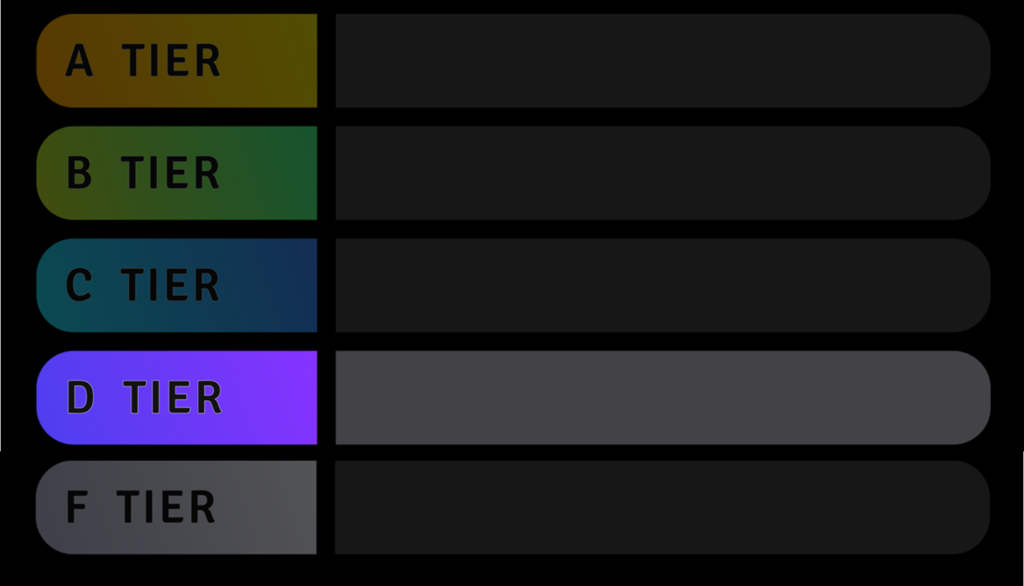
D-Tier Exercises: Specialized and Skill-Dependent
Let’s dive into the deep end of the quad exercise pool. These D-tier exercises aren’t for the faint of heart. They’re like that one friend who’s always suggesting extreme sports for your weekend plans. Exciting? Sure. For everyone? Not quite.
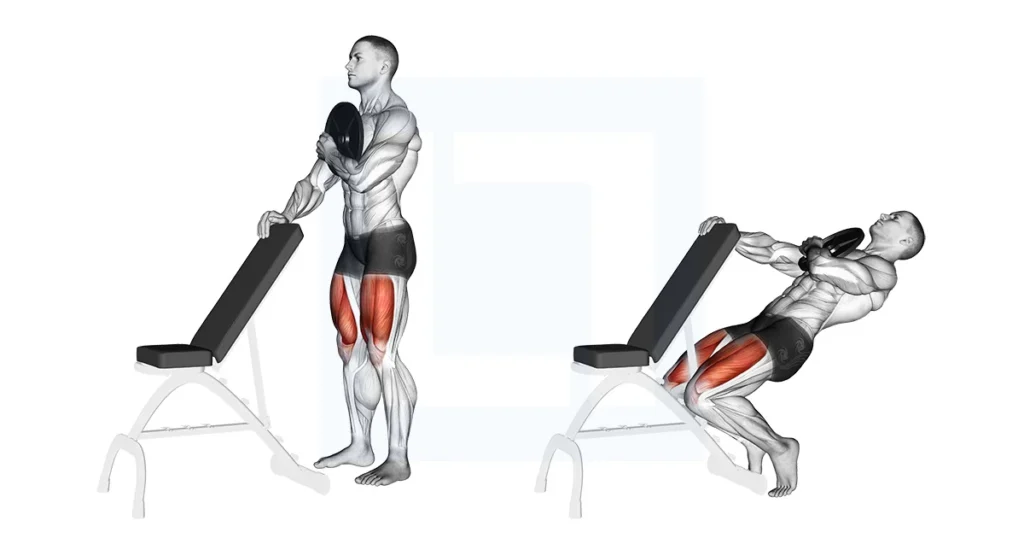
Sissy Squats
Ah, sissy squats. Don’t let the name fool you – there’s nothing sissy about these bad boys. They’re the quad exercise equivalent of tightrope walking over a pit of hungry alligators.
Sissy squats offer a unique stretch and contraction of the quads. They place your knees in a position that would make most orthopedic surgeons wince. But when done correctly, they can provide an intense quad burn that’ll have you questioning your life choices.
The form is crucial here. You’ll lean back, keeping your body in a straight line from knees to head, then lower yourself by bending at the knees. Your heels will lift off the ground, and you’ll feel like you’re about to topple over backward. Fun, right? For more insights on how to optimize your strength and build muscle effectively, consider exploring the ultimate guide to building muscle.
The benefits? Unparalleled quad activation and a stretch that’ll make your quads feel like they’re trying to escape your legs. But the risks are real. One wrong move and you might be having an unplanned chat with your friendly neighborhood physiotherapist.
Overhead Squats
Now, let’s talk about overhead squats. These are the gymnastics of the weightlifting world. They require the flexibility of a yoga instructor, the balance of a tightrope walker, and the shoulder stability of… well, someone with really stable shoulders.
The benefits are undeniable. Overhead squats work your entire body, with a focus on the quads. They improve mobility, stability, and core strength. Plus, they make you look like a badass in the gym.
But here’s the catch – they’re about as easy to master as quantum physics. The skill requirement is through the roof. You need to maintain a straight bar path overhead while performing a full squat. It’s like patting your head and rubbing your belly, except with heavy weights and the potential for embarrassing gym fails.
For both these exercises, the risk-to-reward ratio is what lands them in D-tier. They can be effective, but they’re not for everyone. You need to approach them with caution, proper training, and a healthy dose of humility.
Remember, just because an exercise looks cool on Instagram doesn’t mean it’s the best choice for you. These D-tier exercises are like exotic sports cars – impressive to look at, but not always practical for daily use.
If you decide to venture into D-tier territory, start light, focus on form, and maybe have a spotter nearby. Your quads might thank you, but your ego might need some recovery time.
| Exercise | Benefits | Risks | Skill Level Required |
|---|---|---|---|
| Sissy Squats | Intense quad activation, unique stretch | High risk of knee strain, balance issues | Advanced |
| Overhead Squats | Full-body workout, improved mobility | Complex movement, risk of shoulder strain | Expert |
In the grand scheme of quad development, these exercises are like the spicy sauce at a wing joint – use sparingly and know your limits. Your quads don’t need to be heroes every workout. Sometimes, sticking to the basics is the smartest path to growth. But hey, if you’re feeling adventurous and your joints are up for it, give these a shot. Just don’t say I didn’t warn you when you’re waddling around like a penguin the next day.
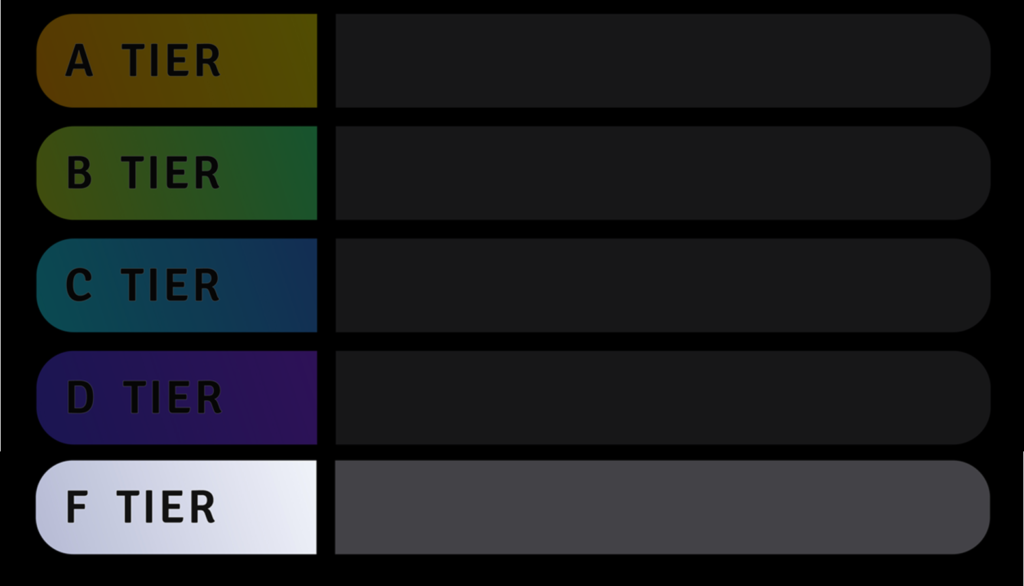
F-Tier Exercises: Use with Caution
Let’s talk about the black sheep of the quad exercise family: the Smith Machine Vertical Leg Press. This exercise is the fitness equivalent of using a butter knife to perform surgery. Sure, it might get the job done, but at what cost?
First off, the Smith Machine Vertical Leg Press puts your spine in a compromised position. Imagine lying on your back, knees to your chest, with a ton of weight pushing down on you. It’s like inviting a sumo wrestler to sit on your abdomen while you’re trying to tie your shoes. Your lower back is forced into an unnatural curve, increasing the risk of disc herniation faster than you can say “ouch.”
The fixed path of the Smith Machine also limits your body’s natural movement patterns. Your legs are forced to follow a straight line, which isn’t how they’re designed to move. This can lead to uneven stress on your knee joints and thigh muscles, potentially causing imbalances and injuries over time.
Moreover, this exercise doesn’t allow for proper engagement of stabilizing muscles. It’s like trying to learn balance while wearing a full-body cast. You’re missing out on the benefits of proprioception and coordination that come with free-weight exercises.
But wait, there’s more! The angle of force in this exercise isn’t ideal for quad development. It’s like trying to build biceps by doing tricep extensions – you’re working against yourself.
If you’re dead set on using a leg press, stick to the traditional 45-degree leg press machine. It’s safer, more effective, and won’t make your spine hate you. Better yet, choose any of the higher-tier exercises we’ve discussed. Your quads (and your chiropractor) will thank you.
Remember, just because a piece of equipment exists in the gym doesn’t mean it’s a good idea to use it. Some things are better left alone, like that mysterious container at the back of your fridge or the Smith Machine Vertical Leg Press.
Conclusion
Selecting the right quad exercises is crucial for maximizing leg development and overall strength. The journey through our A to F tier system highlights the nuanced nature of exercise selection. Remember, there’s no one-size-fits-all approach to quad training.
Experiment with various exercises from different tiers to keep your muscles guessing and growing. Prioritize form over weight, and don’t shy away from challenging movements that push you to your limits. The key is finding the sweet spot between intensity, volume, and recovery.
As you incorporate these exercises into your routine, pay attention to how your body responds. What works for one person may not work for another. Listen to your body, adjust as needed, and don’t be afraid to mix things up.
Ultimately, the best quad workout is the one you’ll consistently perform with proper form and intensity. Whether you’re crushing leg presses or mastering the art of the Bulgarian split squat, remember that progress takes time. Stay patient, stay consistent, and watch those quadriceps grow.
Now, armed with this knowledge, it’s time to hit the gym and put theory into practice. Your quads are waiting to be challenged. Go forth and conquer, fellow iron enthusiasts!

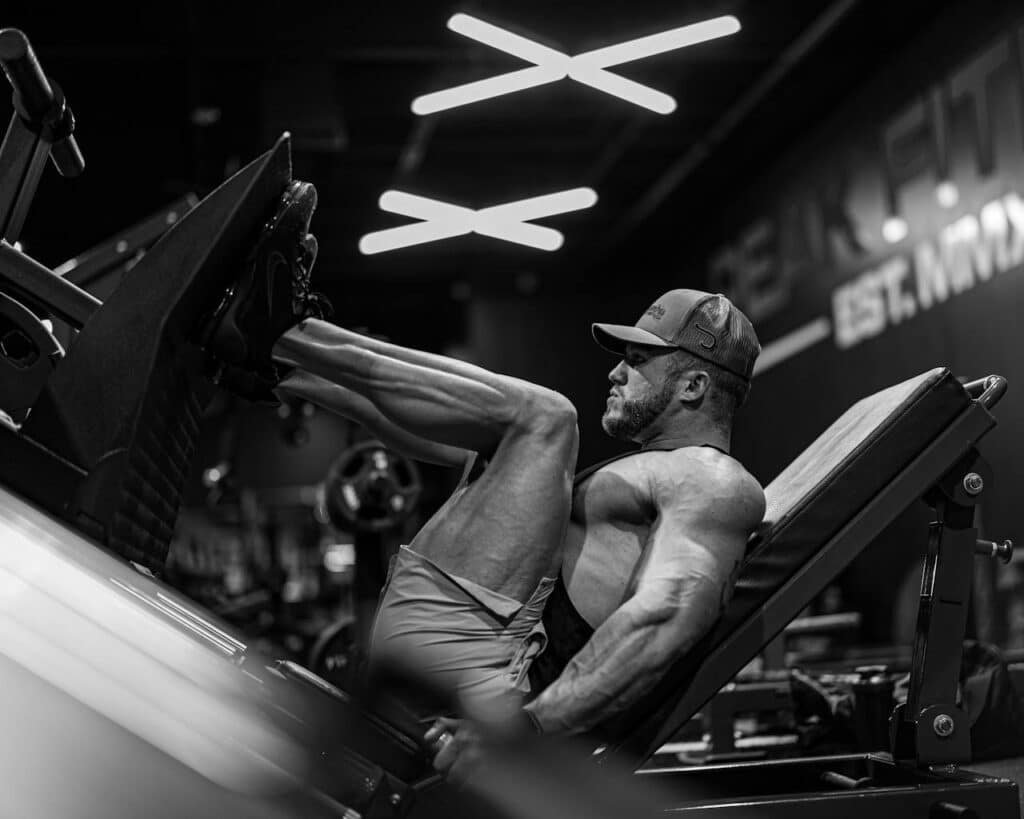
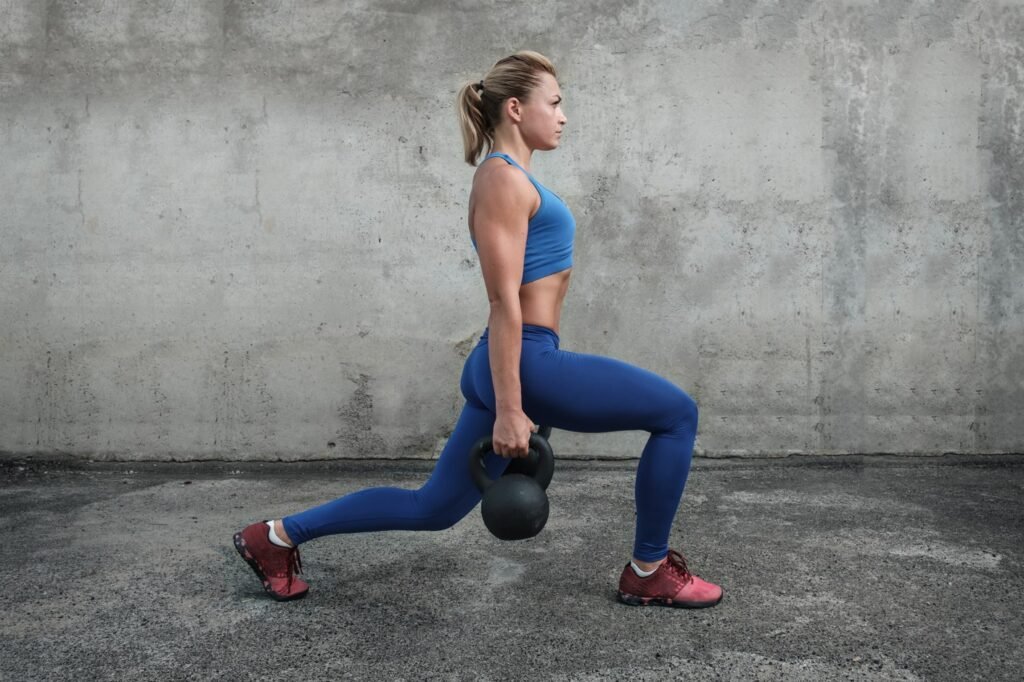
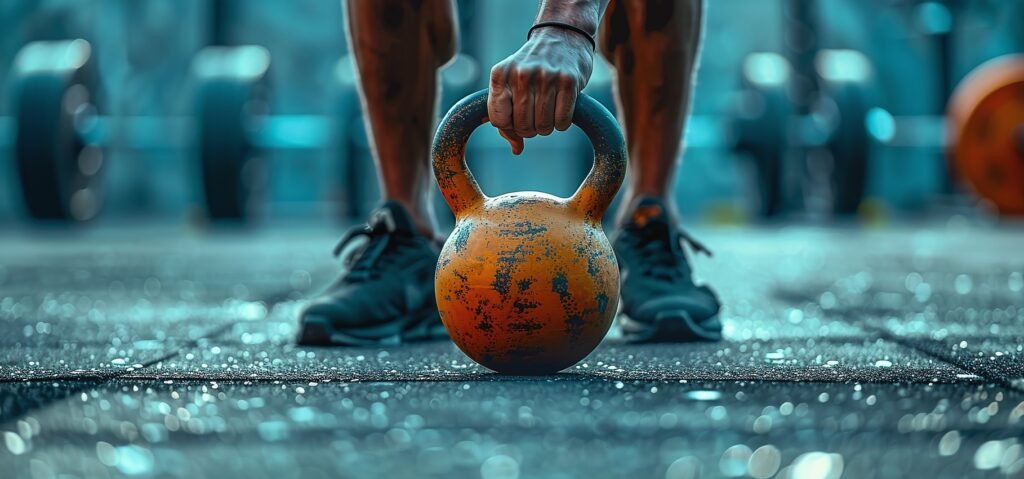
Nice blog here Also your site loads up fast What host are you using Can I get your affiliate link to your host I wish my web site loaded up as quickly as yours lol